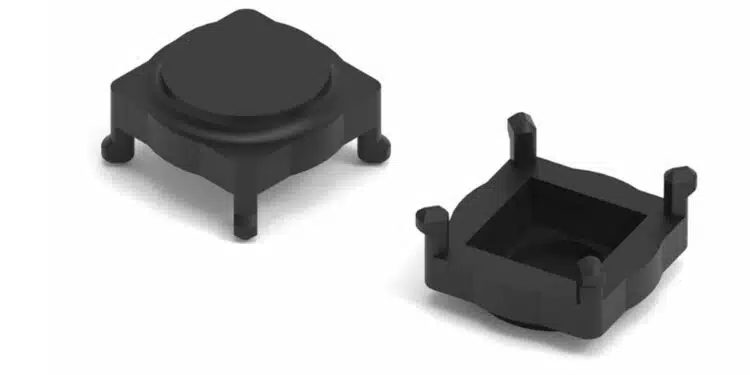Würth Elektronik offers now an accessory for its WSEN-HIDS humidity sensor, the WSEN-ACCE filter cap.
The protective cap shields the high-precision humidity and temperature sensor from dust, water, and mechanical damage. The WSEN-ACCE filter cap is securely mounted with its pins in the holes of the circuit board or is glued in place as part of a sealed housing.
The cap ensures that humidity measurements remain stable and accurate even under challenging conditions. Its protective function extends the sensor’s service life in demanding environments such as industrial or agricultural applications.
Requests from customers wishing to use the MEMS (micro-electro-mechanical systems) sensor, which measures just 1.5 × 1.5 × 0.5 mm, in dusty environments led to the development of the WSEN-ACCE filter cap.
The robust cap is made of high-quality plastic (PBT) and contains a finely tuned filter that allows water molecules to pass through to the sensor while keeping out unwanted particles. With a pore size of just 1.5 microns, the integrated filter fabric made of PTFE and polyester ensures precise and interference-free measurement – even in challenging environments. Although water molecules must first pass through the filter to reach the sensor, the measurement is only delayed by a few seconds. In practical use, this minimal time delay has no impact on the reliability of the measurement results.
The sensor cap meets protection class IP67 and the highest level of lipophobicity according to AATCC 118-1992. How these properties can be utilized in an encapsulated application is described in detail in the available documentation.
Calibrated and temperature-compensated
Thanks to its calibration and integrated temperature compensation, the WSEN-HIDS humidity sensor provides long-term stable measurement of humidity and temperature. The sensor delivers calibrated measurement data with an impressive accuracy of ±1.8% RH in the 20 to 80% relative humidity range.
Thanks to the integrated analog-to-digital converter, the measurement data can be transmitted directly via an I2C interface to common microcontrollers, enabling fast and easy system integration.
The sensor is based on advanced MEMS technology: A dielectric polymer absorbs and releases water molecules in proportion to the relative humidity of the environment. This changes the permeability of a capacitor structure. Würth Elektronik offers an evaluation board, a FeatherWing board, and a software development kit for this sensor.































